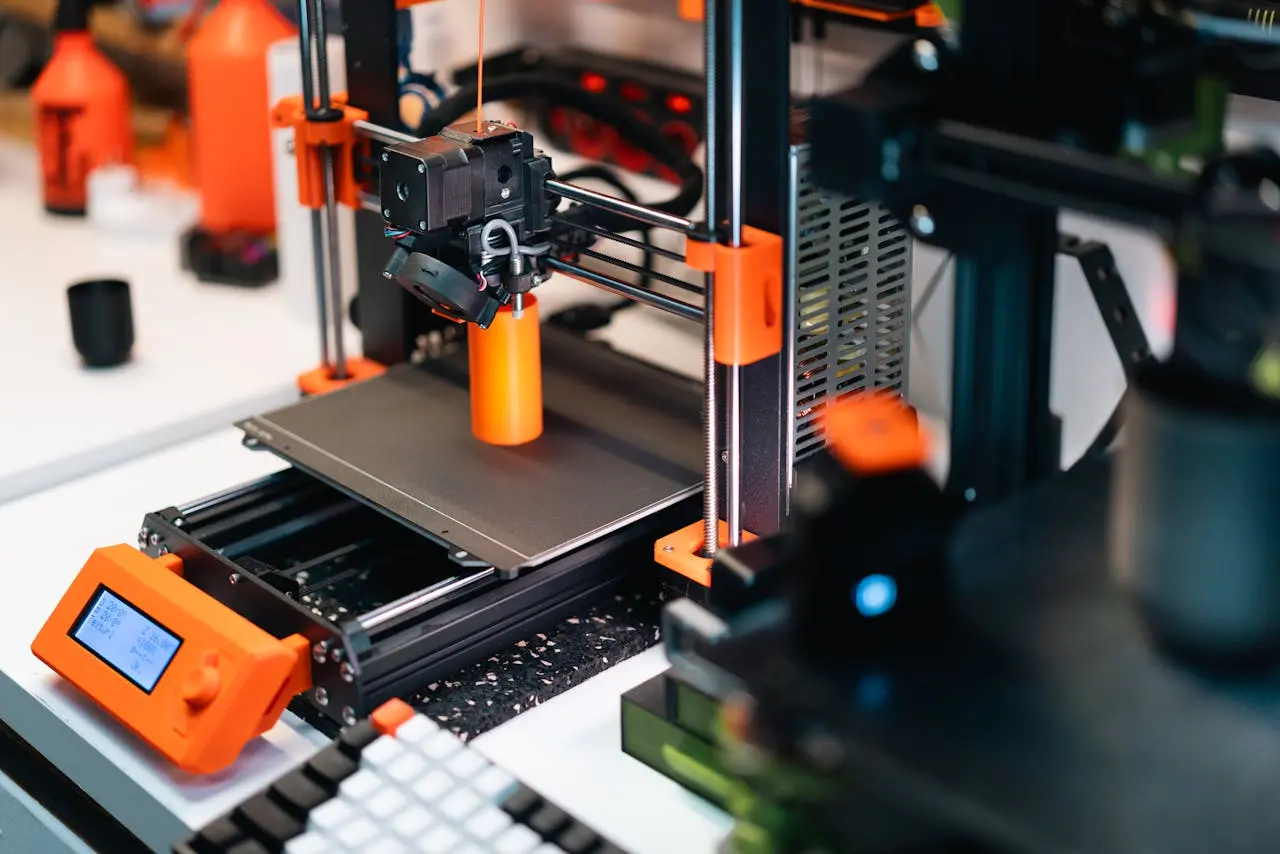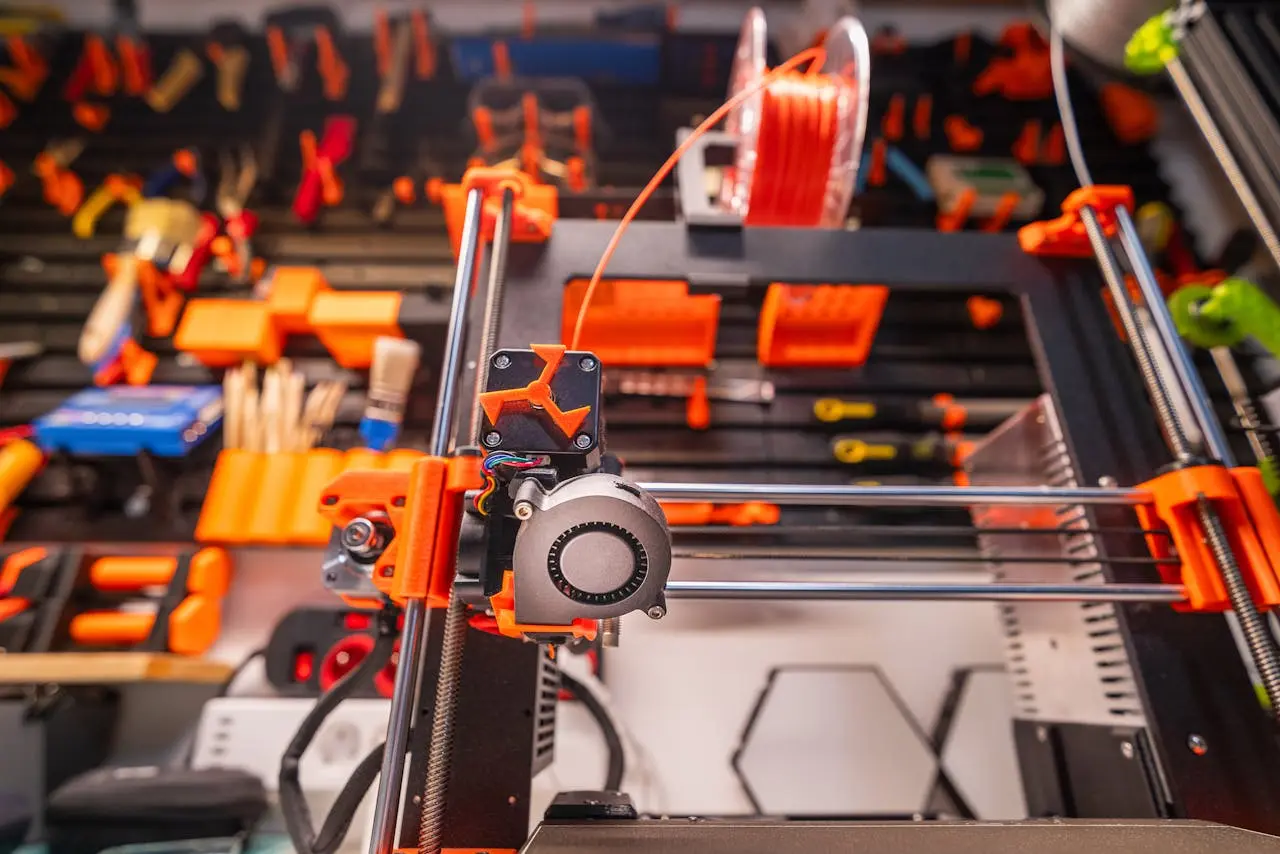Fix Clicking on Your 3D Printer: 7 Easy Solutions

You’re halfway through a great print when it happens: Click. Click. Click. At first it’s subtle. Then it’s louder. And suddenly… your layers start failing.
That clicking noise coming from your 3D printer — usually from the extruder or hotend — isn’t just annoying. It’s your machine’s way of crying for help. Most of the time, it means something is stopping the filament from moving smoothly through the nozzle. And if you ignore it too long, you could end up with a ruined print, a stripped filament path, or even a burned-out hotend.
But here’s the good news: You can fix it. And most of the time, it’s easier than you think.
1. Check for a Partially Clogged Nozzle
A partially clogged nozzle is one of the most common — and frustrating — causes of clicking. It happens when filament flow is restricted but not fully blocked. Your printer tries to push filament through, pressure builds, and the extruder motor starts skipping or grinding, resulting in that telltale click.
Common causes:
- Dust or debris in the filament path
- Carbonized material from heat creep
- Printing too cold
- Frequent material swaps
- Worn or poor-quality nozzles
Symptoms:
- Clicking sounds during infill or thicker parts
- Under-extrusion or inconsistent walls
- Filament curls upward during manual extrusion
- Cold pull removes burnt or stuck material
- Temporary improvement after cleaning, but issue returns
Fix:
- Heat nozzle to 200–220°C for PLA.
- Manually extrude filament — check for curling or weak flow.
- Try a cold pull (especially on PTFE-lined hotends).
- Use a nozzle cleaning needle if needed.
- Replace the nozzle if buildup persists.
Recommended video:
Recommended article:
All3dp - How to Perform a Cold Atomic Pull
2. Inspect the PTFE Tube and Fittings
Your filament’s path includes a PTFE tube — if that tube is damaged, misaligned, or scorched, it increases friction and causes resistance. That resistance often leads to clicking, especially on Bowden-style printers like the Ender 3.
Common causes:
- Burnt or deformed ends from overheating
- Loose push fittings or missing collet clips
- Kinks or bends from poor routing
- Low-grade or worn-out PTFE tubing
Symptoms:
- Clicking during long moves or retractions
- Filament grinding at extruder inlet
- Tube wiggles or slips when touched
- Under-extrusion or backflow
Fix:
- Remove and inspect tube — trim burnt or distorted ends.
- Cut a clean square edge using a flush cutter.
- Reseat tube fully into hotend and extruder.
- Lock it with collet clips.
- Replace the tube if it's discolored, warped, or soft.
Upgrade tip: Use Capricorn tubing for better heat resistance and tighter filament tolerance.
3. Look for Filament Grinding or Under-Tensioning
Your extruder relies on gear pressure to grip filament and push it forward. If the tension is too weak or the gear is clogged or misaligned, the filament slips — and you get clicking and debris buildup.
Common causes:
- Loose tension spring
- Dirty or worn drive gear
- Filament diameter inconsistencies
- Back-pressure from a downstream blockage
Symptoms:
- Clicking near the extruder motor
- Filament dust or shavings around drive gear
- Flat spots or gouges in filament
- Gear "chewing" but no filament movement
Fix:
- Open the extruder and clean the drive gear with a stiff brush.
- Adjust the tension screw or spring for a snug, consistent grip.
- Check filament quality — try a fresh spool.
- Verify the rest of the path is clear (tube, nozzle, etc.).
Pro tip: Upgrade to a dual-gear extruder for stronger, more consistent filament grip.
4. Verify Hotend Temperature Stability
A hotend that doesn’t maintain a stable temperature can lead to under-melting, creating back-pressure that causes the extruder to click or skip.
Common causes:
- Printing too cold for filament
- Failing thermistor or heater cartridge
- Loose hotend wiring
- Cold ambient air or drafty rooms
Symptoms:
- Clicking begins at the start of print
- Thin walls, stringy layers, poor adhesion
- Temperature reading fluctuates ±10°C or more
- Heater block takes longer than usual to heat
Fix:
- Monitor temp during printing via your display or OctoPrint.
- Run a temperature tower to dial in optimal settings.
- Check heater cartridge and thermistor wires — reseat if loose.
- Replace failing components if temp is unstable.
5. Adjust Print Speed and Retraction Settings
Too much retraction, too fast travel speeds, or excessive flow demands can overwhelm your printer — especially on lower-end models — and lead to clicking and under-extrusion.
Common mistakes:
- Bowden printer retraction >6 mm
- Retraction speeds over 45 mm/s
- Print speeds over 60 mm/s with standard PLA
- No max volumetric flow rate defined
Symptoms:
- Clicking during retraction-heavy sections
- Stringing followed by gaps
- Clicking on fast infill or tight infill patterns
- Blobbing on small prints with lots of detail
Fix:
- Direct drive: Retraction 0.8–1.5 mm
- Bowden: Retraction 4–6 mm
- Retraction speed: 25–40 mm/s
- Print speed: 40–60 mm/s for PLA
- Enable combing or Z-hop to reduce retraction need
Retraction tuning guide: All3DP Cura Retraction Settings
6. Diagnose Stepper Motor or Gearbox Issues
If the clicking remains even with no filament in the extruder or after removing the nozzle, it's likely a hardware issue with the stepper motor or gearbox.
Common causes:
- Overheated or underpowered stepper motor
- Worn plastic gears in cheap extruder assemblies
- Loose gear grub screws
- Jammed filament sensor
Symptoms:
- Extruder clicks even without load
- Stepper motor vibrates or stutters
- Motor gets hot to the touch quickly
- Print stops extruding mid-job with no clog
Fix:
- Remove filament and Bowden tube, extrude into open air.
- If clicking persists, inspect gears and motor shaft.
- Tighten any loose grub screws.
- Consider swapping in a known-good motor for testing.
- Replace plastic gears with metal ones if wear is visible.
Pro tip: High-temp environments (like classrooms without climate control) can increase failure rates in cheap extruder motors.
7. Listen Closely — Printer Sounds That Matter
With time, you'll develop an ear for printer sounds. Clicking is just one of many audio cues your machine gives you.
Sound Diagnosis Overview:
Clicking
Likely Cause: Filament jam or resistance in the nozzle or PTFE tube
Fix: Clean the nozzle, clear any blockages, and check for friction in the filament path
Ticking
Likely Cause: Extruder gear slipping or loose tension
Fix: Tighten the extruder tension screw or spring to grip filament more securely
Grinding
Likely Cause: Filament is being chewed by the gear
Fix: Clean the drive gear, reduce extruder tension, and try a fresh filament spool
Squealing
Likely Cause: Dry rails, belts, or worn bearings
Fix: Lubricate the motion system, check for misalignment, and ensure smooth movement
Speaking of noise...
Did you know that some printers now have noise cancelllation?
Conclusion
Clicking isn't harmless. It's a warning that something — mechanical, thermal, or slicer-related — is interfering with extrusion.
This guide walked you through 7 key causes of extruder clicking, along with detailed, real-world fixes for each one. Whether you're a school tech, a STEAM teacher, or a home hobbyist, the fixes above will help restore smooth, consistent printing.
Still hearing clicking?
See if you're in our South Jersey service area then contact us today to schedule a repair!


.jpg)